Abstract
Detailed photostability studies were carried out using purified delta-endotoxin crystals from Bacillus thuringiensis subspecies HD-1 and HD-73. The mechanism and time course of sunlight inactivation was investigated by: (a) monitoring the tryptophan damage in the intact crystals by Raman spectroscopy, (b) amino acid analysis and (c) biological assays using insects. The results demonstrate that, for purified HD-1 or HD-73 crystals, the 300-380 nm range of the solar spectrum is largely responsible for bringing about crystal damage and consequent loss of toxicity. Purified Bacillus thuringiensis crystals that were exposed to fermentation liquor after cell lysis were more quickly degraded by sunlight than were crystals from cells that were lysed in water. This effect is attributed to adsorption of chromophores by crystals exposed to the fermenter liquor and the subsequent ability of these chromophores to act as photosensitizers. The importance of a photosensitization mechanism in crystal degradation was further emphasized by irradiating Bacillus thuringiensis crystals in vacuo. The latter crystals were found to be less damaged (20% tryptophan loss after 24 h irradiation by the solar spectrum) compared with crystals from the same sample irradiated in air (60% (60% tryptophan loss). Other methods of decreasing exposure of the crystals to oxygen, e.g. by using glycerol as a humectant, were also found to be successful in controlling photodamage. The results concerning photodegradation support a photosensitization mechanism involving the presence of exogenous (and possibly endogenous) chromophores which create singlet oxygen species upon irradiation by light.
Full text
PDF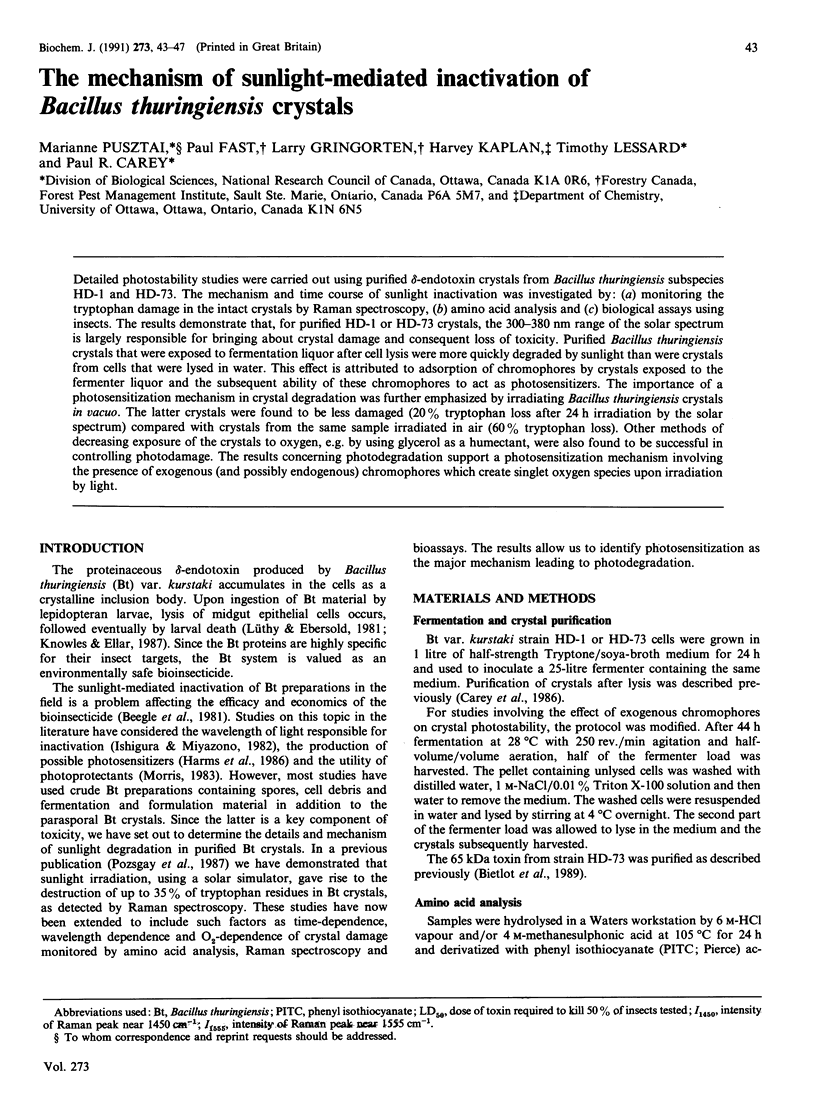
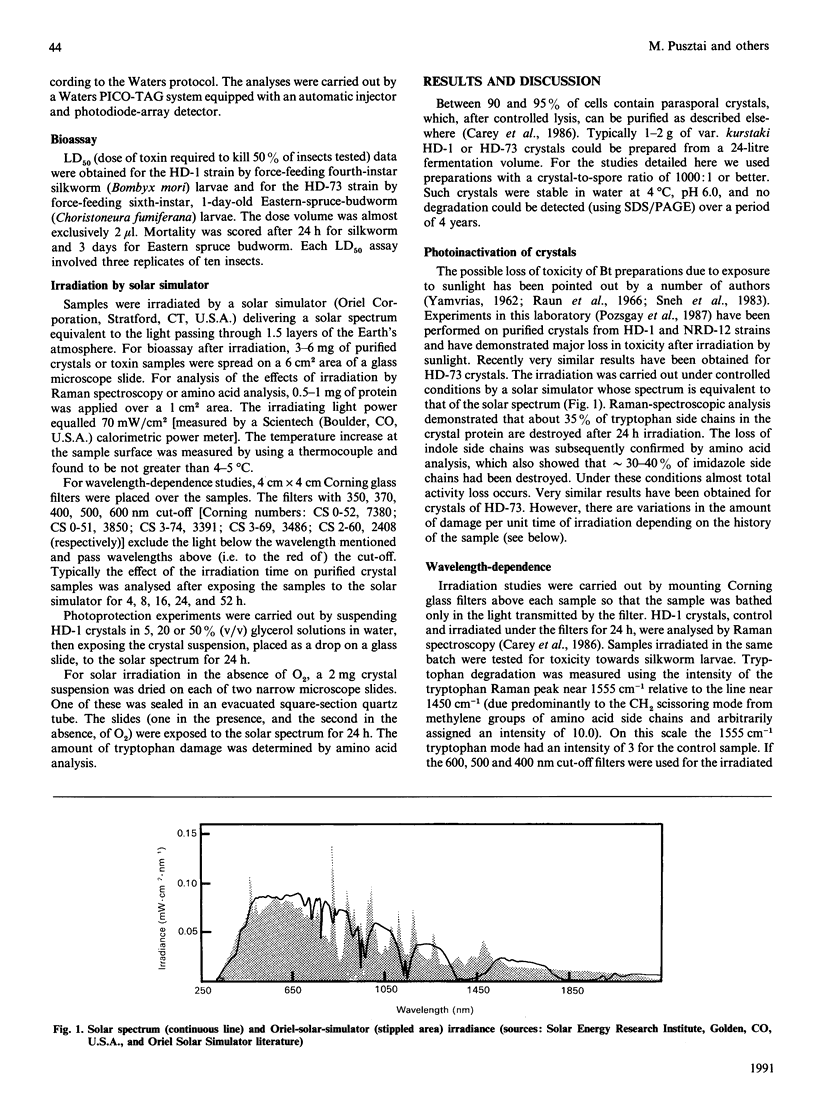
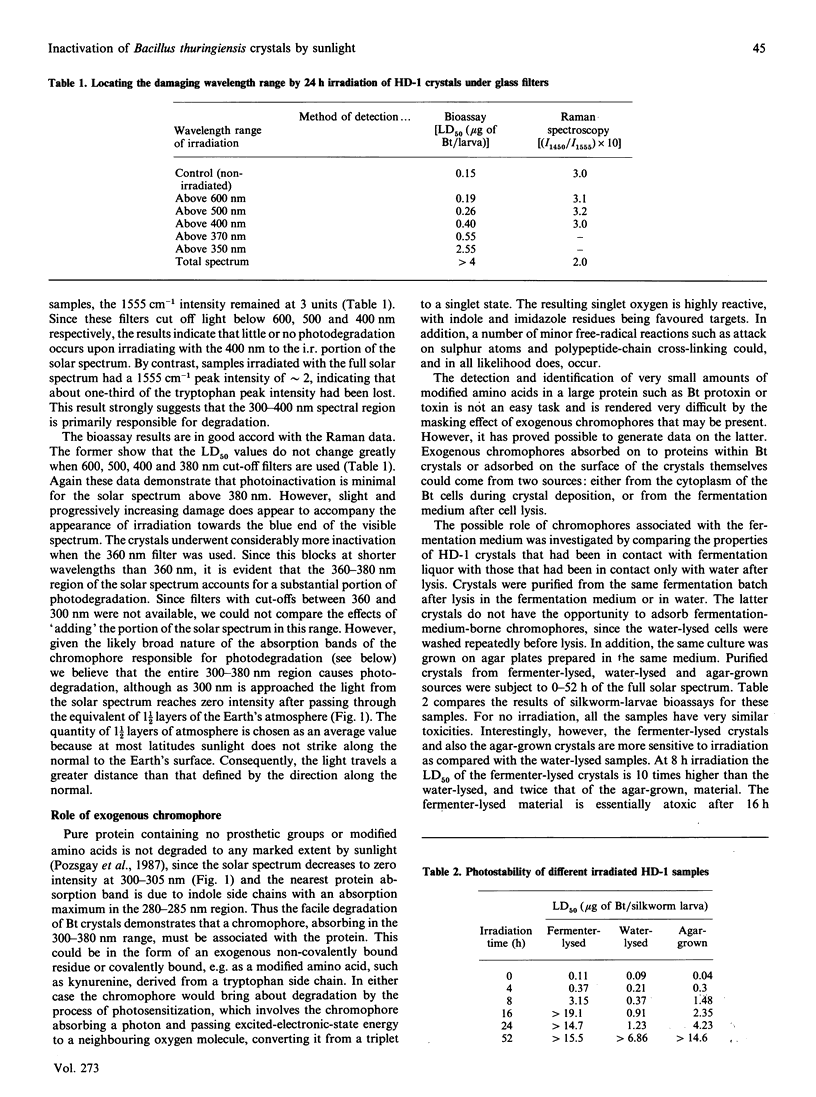
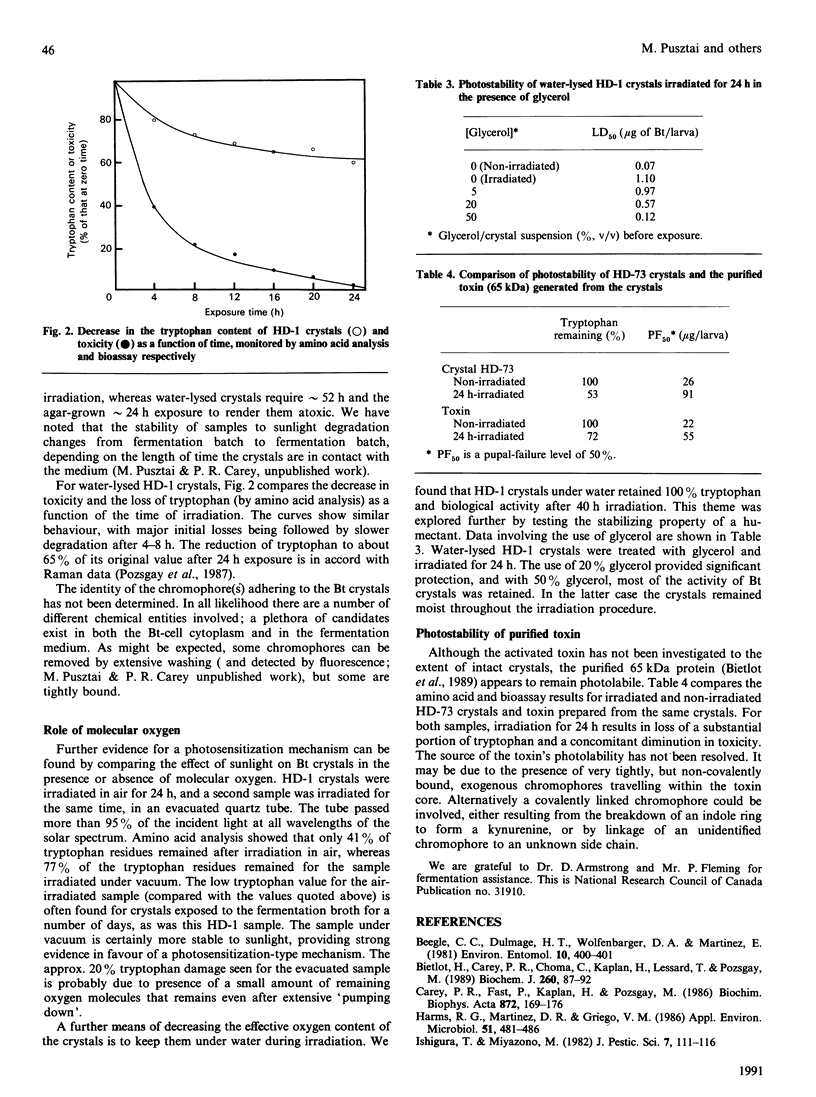
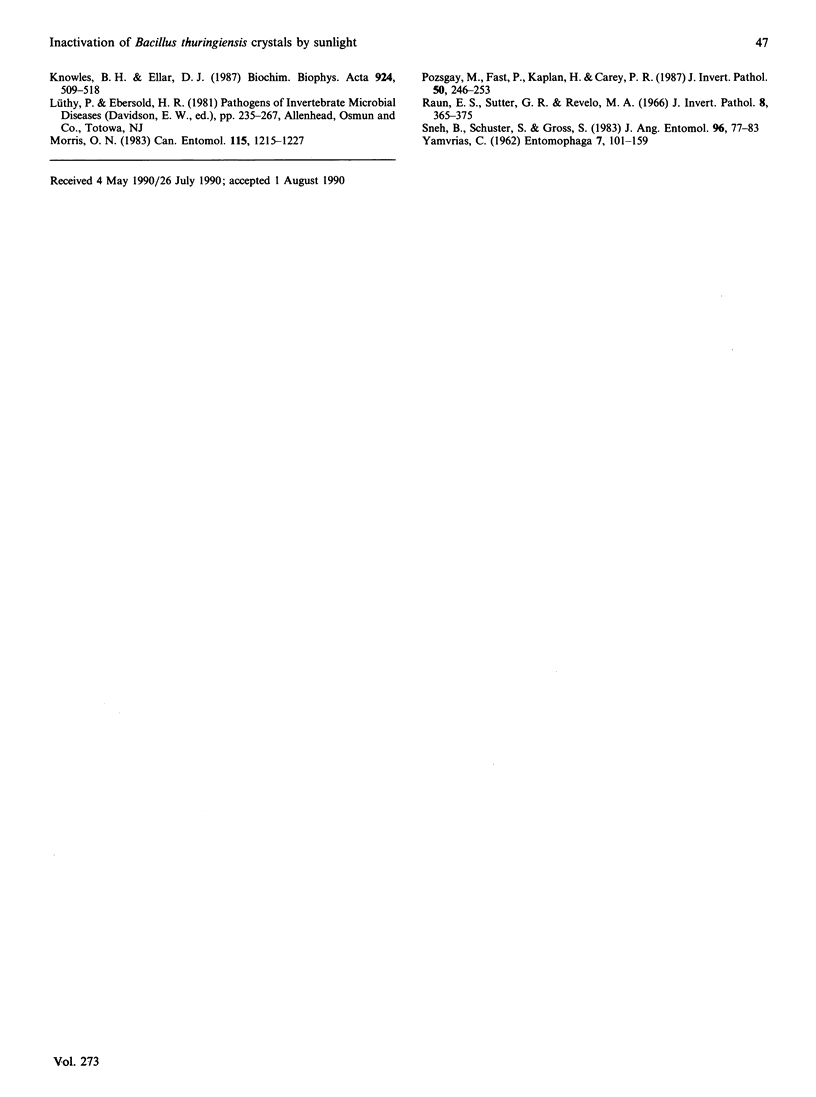
Selected References
These references are in PubMed. This may not be the complete list of references from this article.
- Bietlot H., Carey P. R., Choma C., Kaplan H., Lessard T., Pozsgay M. Facile preparation and characterization of the toxin from Bacillus thuringiensis var. kurstaki. Biochem J. 1989 May 15;260(1):87–91. doi: 10.1042/bj2600087. [DOI] [PMC free article] [PubMed] [Google Scholar]
- Harms R. L., Martinez D. R., Griego V. M. Isolation and Characterization of Coproporphyrin Produced by Four Subspecies of Bacillus thuringiensis. Appl Environ Microbiol. 1986 Mar;51(3):481–486. doi: 10.1128/aem.51.3.481-486.1986. [DOI] [PMC free article] [PubMed] [Google Scholar]


